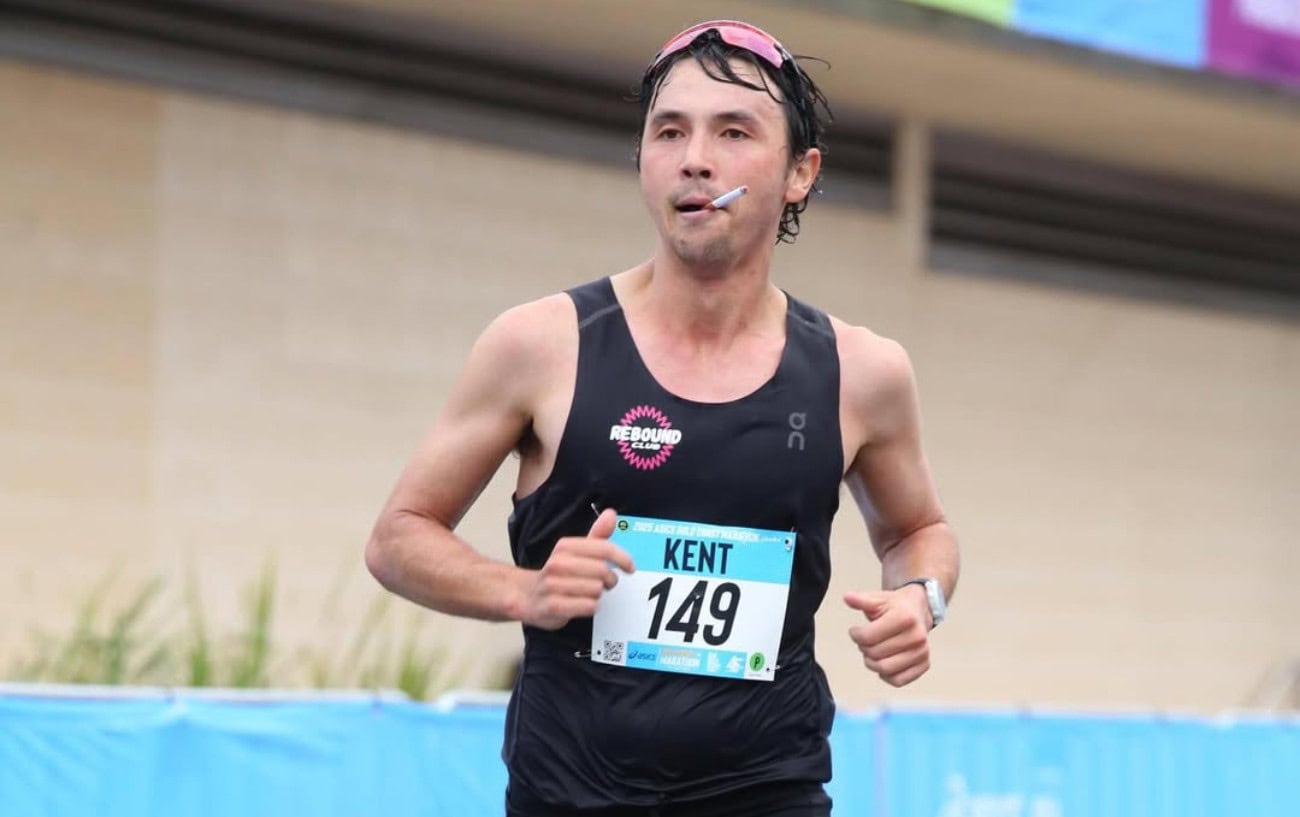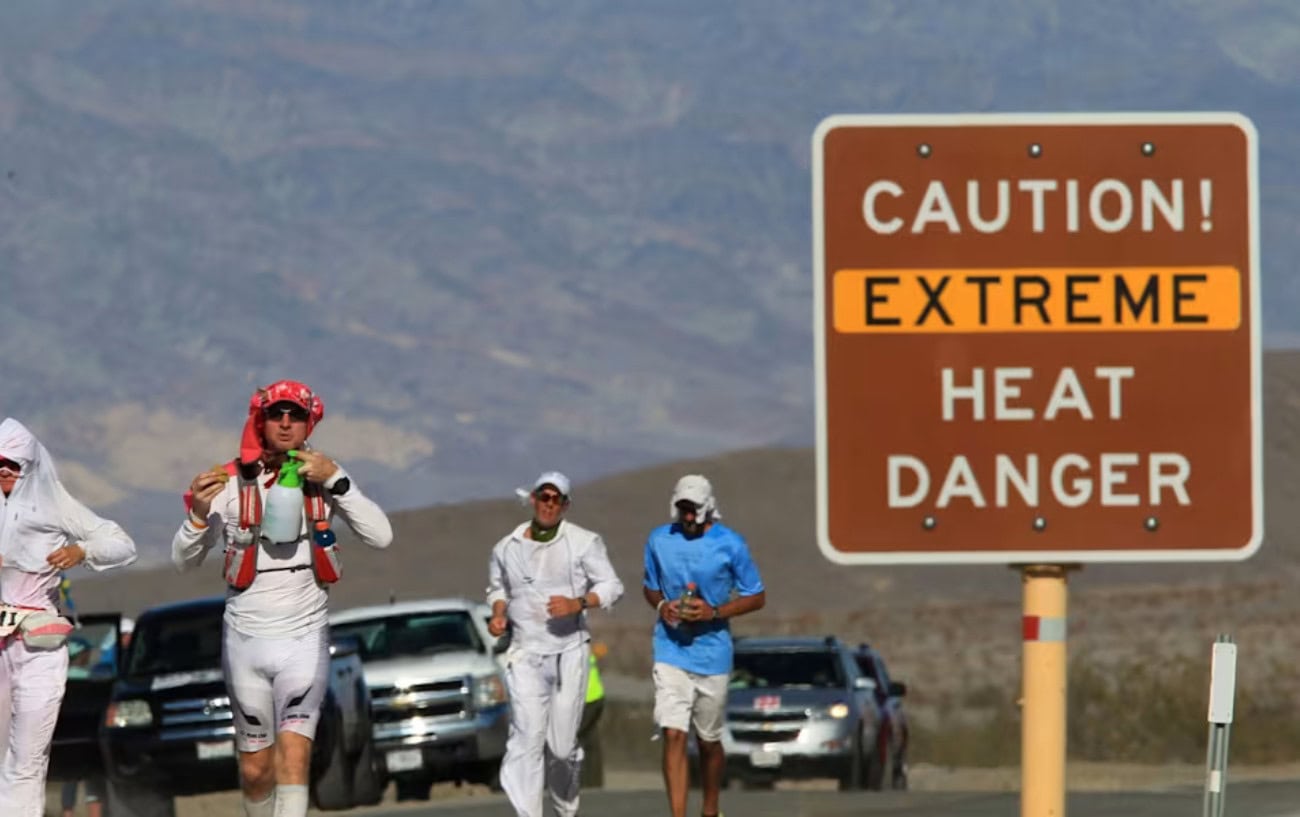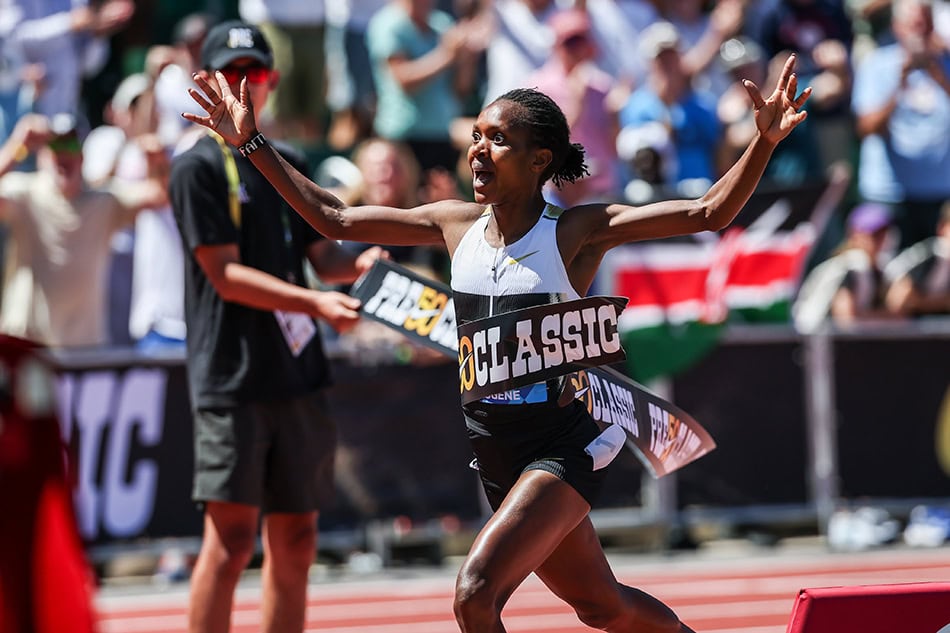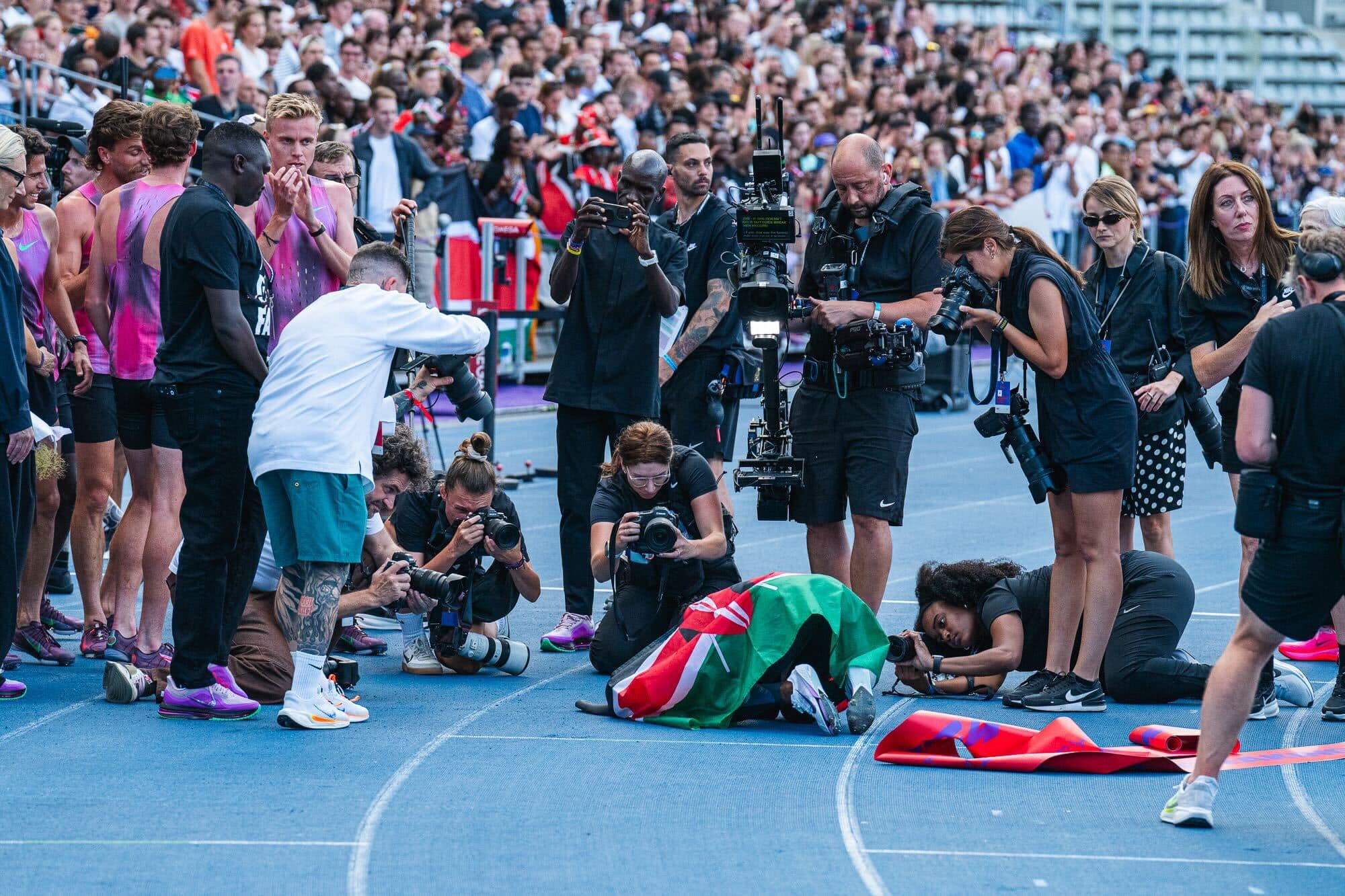Most of the new runners I coach decide to tackle a 5K for their first race. It’s a great goal because it’s an approachable distance, even for beginners, and a huge milestone for new runners.
For your first 5K, just finishing the race or park run is a fantastic goal because it takes the pressure off running a certain pace and allows you to be present and enjoy the experience of the race itself.
However, after finishing your 5K race for the first time, setting a 5K time goal is a good way to get faster, provide direction to your training, and keep yourself motivated by the allure of setting a PR.
If you’ve been able to break 30 minutes in the 5K, you might want to set your sights on how to run 5K in 27 minutes. In this guide, we will cover how to run a 5K in 27 minutes and provide a complete training plan so you can get started today.

How Far Is 5K?
Before we get into the specifics of how to run 5K in 27 minutes, let’s cover the basics in case this will be your first race or you’re a novice runner.
The “K” component of the 5K distance stands for the metric distance of a kilometer, so a 5K is 5,000 meters. For runners in the United States who are more accustomed to miles, this converts to slightly longer than 3.1 miles.
What Pace Is A 27 Minute 5K?
To run a 5K in 27 minutes, you will need to run 8:41 per mile or 5:24 per kilometer. This means a 27-minute 5K pace is 8:41 per mile (8 minutes and 41 seconds) or 5:24 per kilometer (5 minutes and 24 seconds).
However, since most people looking to run 5K in 27 minutes want to break 27 minutes as a barrier (running 26:59 or faster), aim to run the race at an 8:40 pace per mile or 5:23 per kilometer. This will give you a small buffer for a finish time in just under 27 minutes.
If you are running on a track, 5K in 27 minutes works out to 2:10 per 400 meters and 4:20 for 800 meters.

What Is The Running Speed For A 5K in 27 Minutes?
If you are training to run 5K in 27 minutes on the treadmill, your race pace workouts will be run at a treadmill speed of 6.9 mph (11.1 km/hr).
How Do I Train To Improve My 5K Time To Under 27 Minutes?
Running a 5K in 27 minutes is an appropriate goal if you’ve run a 5K for around 30 minutes or faster. If you have yet to run fairly close to this time, you might want to start with running a 5K in 30 minutes.
You should also be able to run one mile in 8 minutes and 40 seconds, as this will essentially be your race pace for 5K in 27 minutes.
What Are The Elements of Training to Run 5K in 27 Minutes?
Our 27-minute 5K training plan involves running 4-5 days per week, and resting at least one. You should be able to run 3-4 miles comfortably without stopping and have about 5-10 hours per week to train.
Just as training for a 10K, half marathon, or marathon, you should follow a well-rounded training program with interval training, tempo runs, hills, distance runs, cross-training, and strength training when training for a 5K.

Easy Runs
Easy runs help develop your aerobic base and get your legs and feet used to the mileage needed to train for your 5K. Easy runs should be “easy” and run at a comfortable pace.
Run at a conversational pace, which is approximately an effort of 3-4 on a scale of 1-10, where 10 is the max effort.
Your exact pace during an easy run isn’t important, so you don’t even need to use a GPS watch if you don’t want to.
Long Runs
Long runs build stamina and improve aerobic capacity, muscular endurance, and mental strength. They also increase mitochondrial density in muscles, making them more efficient at burning fat and producing energy aerobically.
Additionally, long runs strengthen your muscles, joints, bones, connective tissues, heart, and lungs. Even though a 5K is only 3.1 miles, you’ll want to work up to a long run of 7 miles or so.

Speed Work
Speed workouts or interval sessions are usually run on the track so that you can run specific distance intervals. With the goal of 5K in 27 minutes, you’ll have speed workouts involving race pace work (2:10 per 400 meters) and faster paces.
Speed workouts are challenging, but they are critical to preparing your body to run fast, handle race pace, and improve your anaerobic capacity.
Hill Repeats
Hill repeats involve sprinting uphill, which builds power, speed, and strength and can help increase your cadence or turnover.
The goal of these high intensity workouts is to build speed, so run each hill and repeat as fast as possible. Drive with your glutes and hips, bring your knees up, keep your stride short and powerful, engage your core, and use a powerful arm swing.
These workouts will really get your heart rate up!

Threshold Workouts
Threshold workouts are designed to improve your lactate threshold, or the point at which your body can no longer clear lactate from the muscles as quickly as it is being produced.
When you run faster than the pace at your lactate threshold, you will rapidly fatigue, and your legs will feel heavy and tired. Threshold intervals help condition your body to handle running faster before hitting these anaerobic efforts.
The lactate threshold occurs around 83-88% of your VO2 max, so your threshold run pace would be the pace you are running at 83-88% of your VO2 max according to your lab results or roughly the pace you could hold at max effort for an hour of running.
For most runners, the threshold run pace is about 25-30 seconds per mile slower than 5K race pace.
Therefore, if you are training to run 5K in 27 minutes, your pace for threshold workouts should be around 9:05-9:10 per mile or 5:35-5:38 per kilometer.

Strides
Strides are short accelerations or sprints from 50-200 meters.
Running at this speed trains your neuromuscular system to handle faster paces in a controlled and coordinated manner, increases running cadence, and can help you have a strong finishing kick in your 5K race.
Cross-Training Workouts
Running is a high-impact, repetitive activity, so the risk of injury is fairly high if you increase your weekly mileage or total running time too quickly.
Low-impact cross-training exercises like biking, pool running, swimming, elliptical, and rowing can supplement your running and help prevent overuse injuries by using different muscles and movements and putting less stress on the musculoskeletal system.
Rest Days
Rest days are important because they give your legs and feet time off to recover and rebound from training. You should take off at least one full day per week during this 5K training program.

Strength Training
Total-body strength training workouts help prevent injuries by correcting strength imbalances and building functional stability, which allows the body to handle the miles of running.
Aim to do 2 total-body strength training workouts per week, focusing on complex movements such as squats, lunges, step-ups, push-ups, pull-ups, and core exercises.
You can begin with 3 rounds of 8 reps of each exercise.
5K In 27 Minutes Training Plan
This 6-week 5K training plan will help you run 5K in 27 minutes. To this schedule, add two days of strength training per week.
| Monday | Tuesday | Wednesday | Thursday | Friday | Saturday | Sunday |
| Rest or 30-45 minutes cross-training | 30-minute easy run or 3-4 miles | 3 miles easy run | Rest day | Warm up 2 miles 8-10 x 100 meter or 30-45 second hill sprints 1 mile cool down | Warm-up 1 mile 2 x 8 minutes at 9:05-9:10 per mile or 5:35-5:38 per kilometer pace with 90 seconds in between 4 x 30 seconds at sprint/mile pace with 30 seconds rest Cool down 1 mile | Long run 4-5 miles |
| Rest or 30-45 minutes cross-training | Warm-up 1 mile 5 x 1,000 meters in 5:20-5:24 with 200-meter jog in between Cool down 1 mile | 3-4 miles easy run | Rest day | Warm-up 1 mile 3 x 1 mile in 8:37-8:41 minutes with 200 meter jog in between Cool down 1 mile | 30 minutes easy run or 3-4 miles | Long run 5-6 miles |
| Rest or 30-45 minutes of cross-training | Warm-up 1 mile 3 x 1 mile in 8:37-8:41 minutes with a 200-meter jog in between Cool down 1 mile | 3-4 miles easy run | Rest day | Warm up 1 mile 3 x 8 minutes at 9:05-9:10 per mile or 5:35-5:38 per kilometer pace with 90 seconds in between 4 x 30 seconds at sprint/mile pace with 30 seconds rest Cool down 1 mile | 30-minute easy run or 3-4 miles with 4 x 50-75m strides | Long run 6-7 miles |
| Rest or 30-45 minutes of cross-training | Warm-up 1 mile 1 x 2 miles in 17:15-17:20 200-meter jog 4 x 400 meters in 2:04-2:09 with 90 seconds recovery Cool down 1 mile | 4-5 miles easy run | Rest day | Warm up 2 miles 10-12 x 100 meter or 30-45 second hill sprints 1 mile cool down | 30-minute easy run or 3-4 miles with 4 x 50-75m strides | Long run 7-8 miles |
| Rest or 30-45 minutes of cross-training | Warm-up 1 mile 1 x 1 mile in 8:35-8:40 200-meter jog 4 x 1,000 meters in 5:20-5:24 with 60 seconds recovery Cool down 1 mile | 4-5 miles easy run | Rest day | Warm-up 1 mile 25 minutes at threshold pace (9:05-9:10 per mile or 5:35-5:38 per kilometer) 1 mile cool down | 30-minute easy run or 3-4 miles with 4 x 50-75m strides | Long run 6 miles |
| Rest or 30-45 minutes of cross-training | Warm-up 1 mile 6 x 800 meters in 4:20 with 200-meter jog in between Cool down 1 mile | 4 mile easy run | Rest day | 15-20 minute easy jog + 4 strides | 5k Race | Shake out or active recovery walk |
Let us know how your race goes! Once you break 27 minutes, set your sights on how to run 5k in 25 minutes. You’ve got this!
And, for when you are really advancing, here’s a sub 20 minute guide for a 5K:












